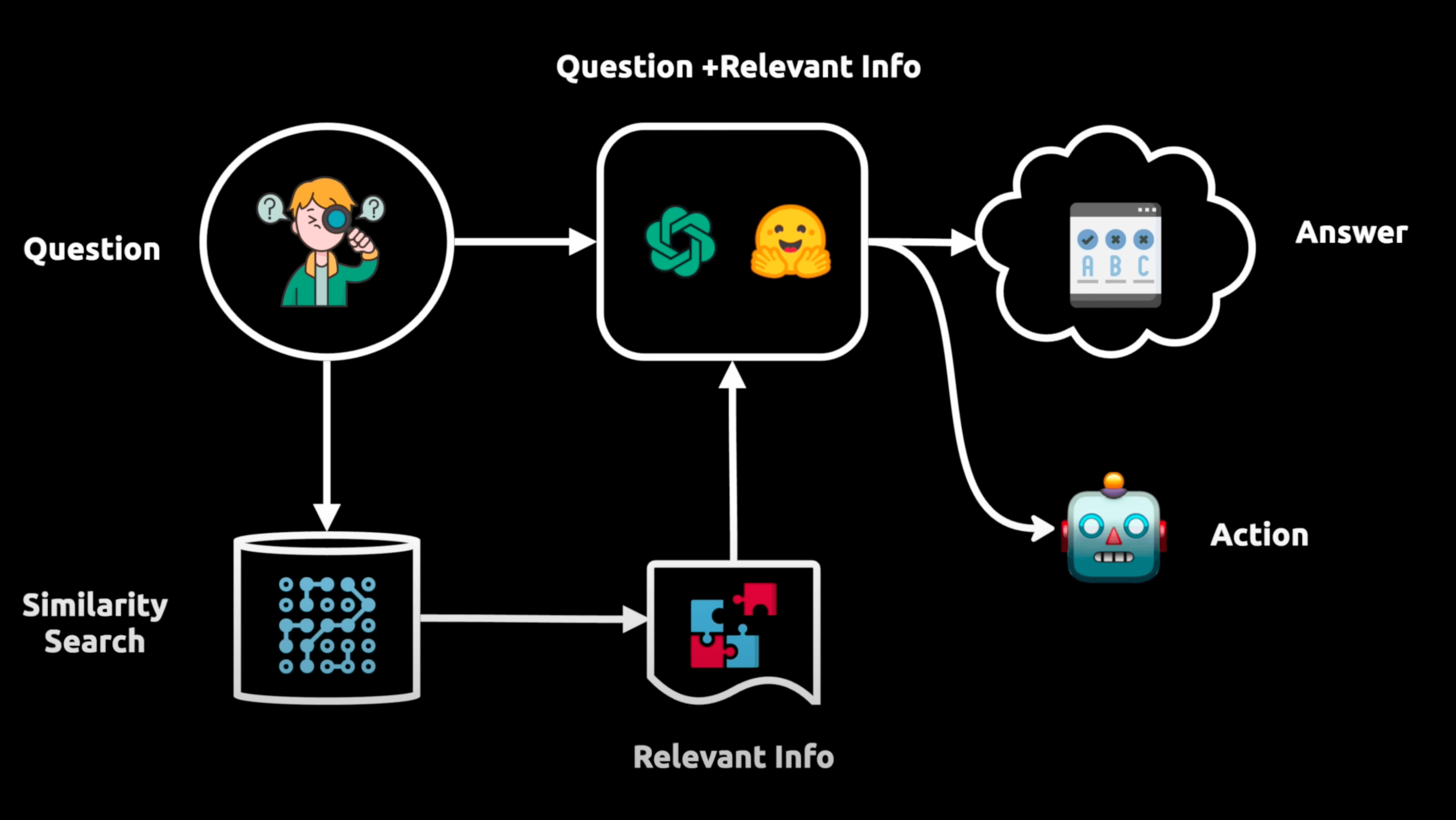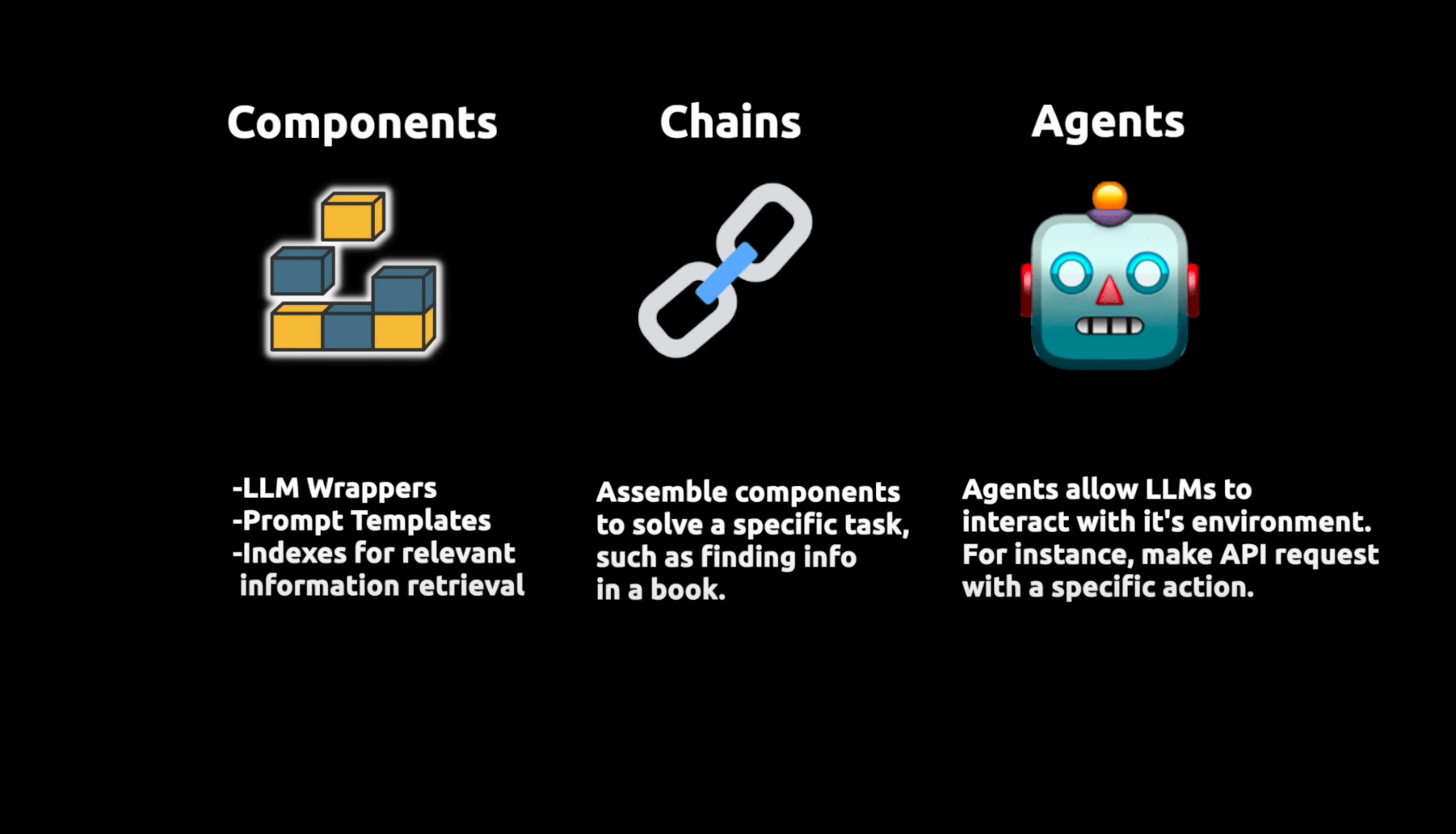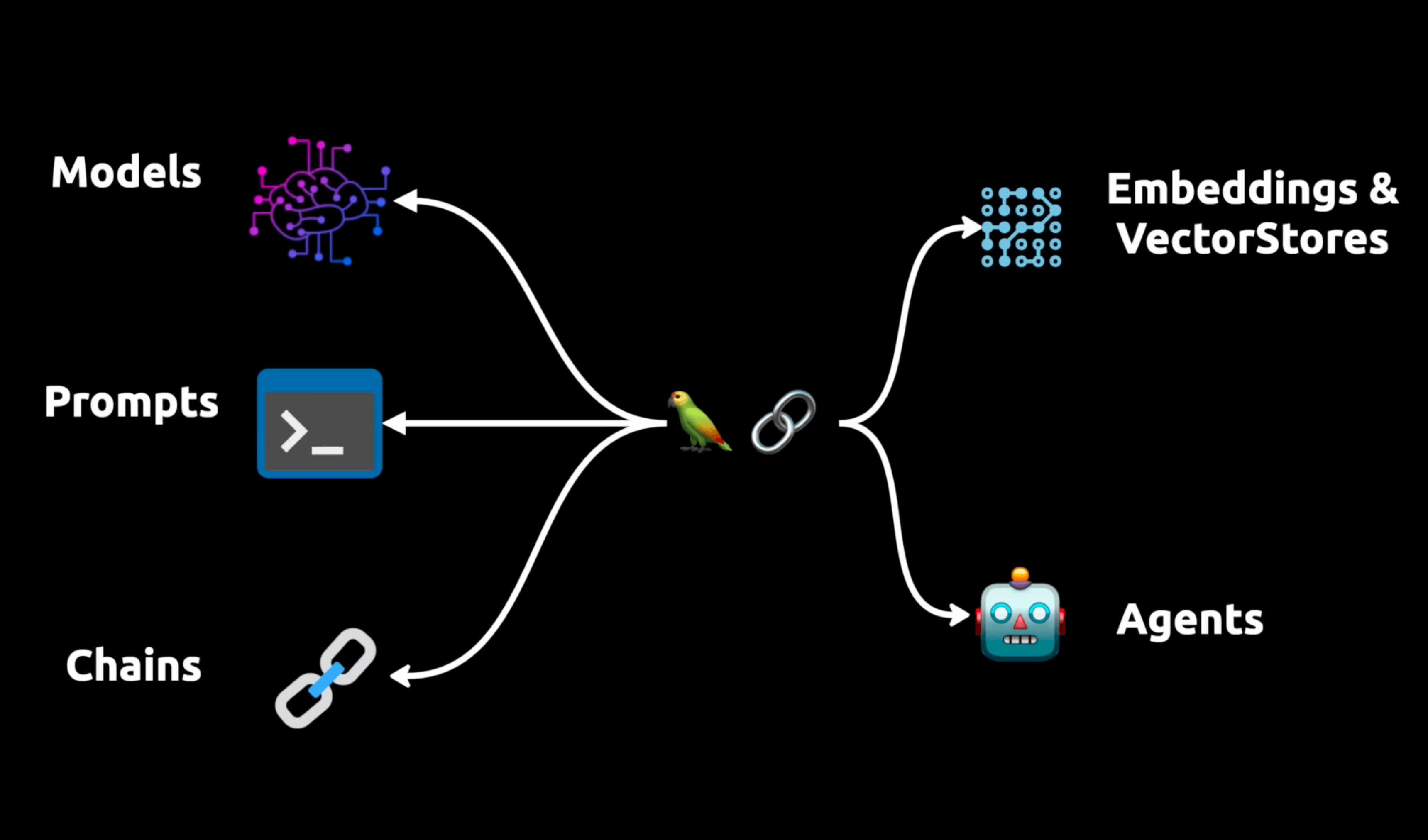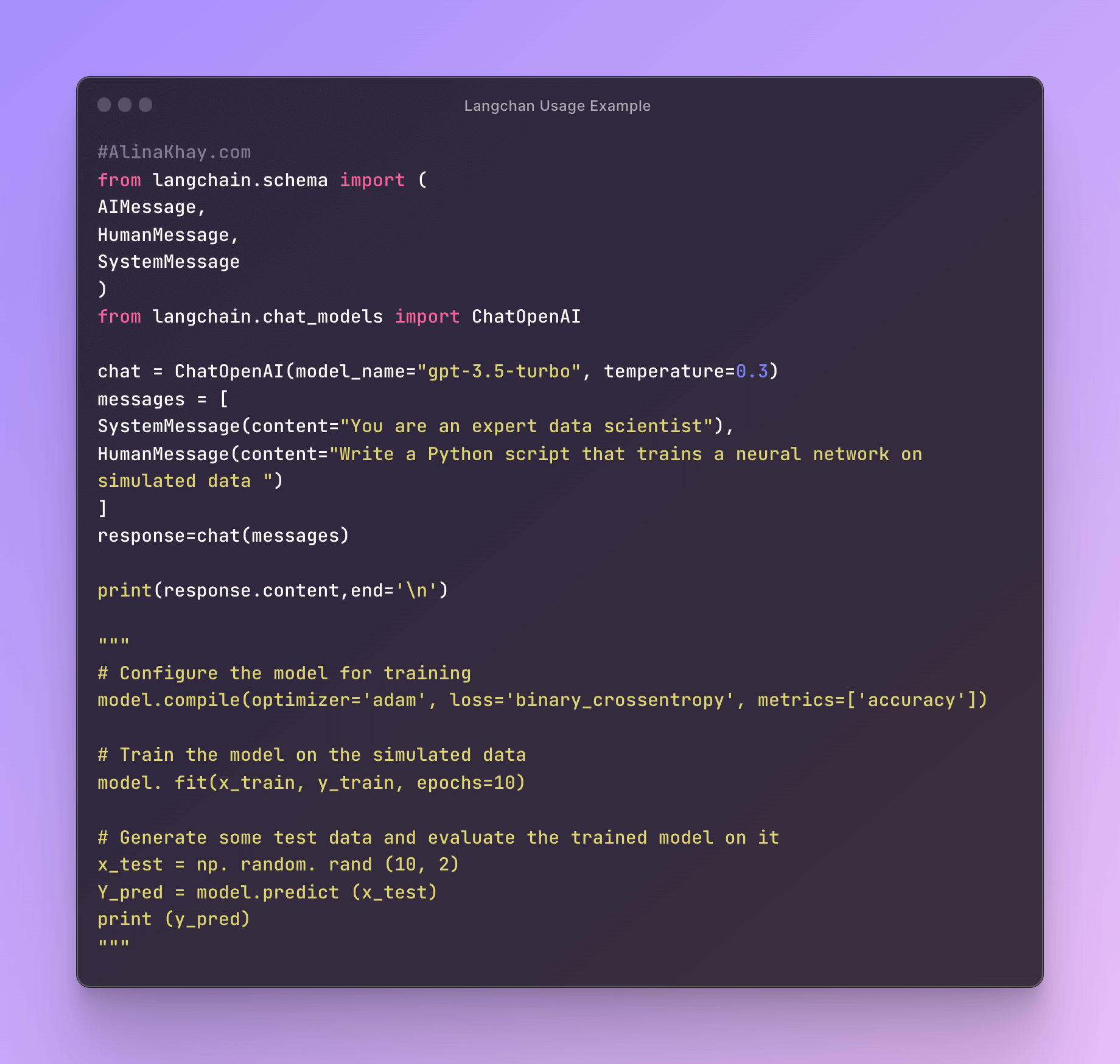
LangChain Explained in Under 10 Minutes Quickstart Guide
22 October, 2023
📊 LangChain, an open-source framework, is revolutionizing the way developers integrate large language models like GPT-4 with external data sources. This powerful framework enables the seamless connection of language models to personalized data repositories, opening the door to a wide array of applications, from personal assistance to advanced data analytics.
Exploring Langchain's Purpose
Langchain addresses the challenge of harnessing the power of language models like GPT Four to access specific information from custom data sources.
While GPT models excel at general knowledge, Langchain enables users to connect these models to their own data, whether it's from documents, PDFs, or proprietary databases. This isn't just about copying and pasting text; it's about referencing entire databases.
Langchain facilitates this by breaking data into chunks stored as embeddings, making it accessible for language models.
The Langchain Pipeline
🤖 Langchain operates on a structured pipeline. A user initiates a question, which is sent to a language model. The model's vector representation of the question is used to perform a similarity search in the vector database. This retrieves relevant data chunks, which are then provided to the language model. With both the question and data, the language model can offer answers or take actions.
Langchain builds applications that follow this pipeline, making them data-aware and agentic, opening the door to countless practical applications.

Practical Applications
🧐 The implications of Langchain are profound. It can enable personal assistants to book flights, transfer money, and pay taxes, significantly impacting everyday tasks. Learning and education will benefit, as a language model can reference an entire syllabus and facilitate rapid learning. Fields like coding, data analysis, and data science will be transformed by Langchain's capabilities.
Connecting language models to company data, such as customer and marketing data, will accelerate data analytics and data science progress.

Langchain's Key Concepts
🔗 Langchain's value proposition can be divided into three main concepts: LLM wrappers for connecting to language models, prompt templates for dynamic user input, and chains for combining components into complete applications. Additionally, agents allow language models to interact with external APIs. These elements collectively form the core of the Langchain framework.

Exploring Langchain's Components
Langchain consists of several crucial components:
- Models or Wrappers: This module provides an abstraction layer to connect to most available third-party LLM APIs. It has API connections to ~40 public LLMs, chat, and embedding models. These enable connections to large language models.
- Prompt Templates: This module allows you to build dynamic prompts using templates. It can adapt to different LLM types depending on the context window size and input variables used as context, such as conversation history, search results, previous answers, and more. They allow dynamic modification of prompts with user input.
- Chains: Chains combine language models and prompt templates, creating an interface for user interactions.
- Indexes and Vector Stores: Indexes refer to ways to structure documents so that LLMs can best interact with them. This module contains utility functions for working with documents and integration to different vector databases. These serve as indexes for data chunks.
- Agents: Some applications require not just a predetermined chain of calls to LLMs or other tools, but potentially to an unknown chain that depends on the user’s input. In these types of chains, there is an agent with access to a suite of tools. Depending on the user’s input, the agent can decide which, if any, tool to call. Agents facilitate interaction between language models and external APIs.

Getting Started with Langchain
👩💻 To dive into Langchain, you'll need to install a few libraries, such as Python n, Langchain, and the Pine Cone client. Pine Cone serves as the vector store. Your environment file should contain OpenAI API keys and Pine Cone environment details. Once these keys are set, you can use Python n to load them.

Working with Language Models
Langchain allows you to work with language models like GPT Four and GPT 3.5 Turbo. You can interact with these models through the OpenAI wrapper and a schema that includes AI messages, human messages, and system messages. These components enable you to configure and use chat models efficiently.

Dynamic Prompt Templates
📚 Prompt templates play a crucial role in Langchain, allowing dynamic changes to prompts based on user input. They enable personalized interactions with language models, enhancing the user experience.

Creating Chains for Advanced Applications
⚙️ Chains in Langchain are the building blocks of applications. They combine language models and prompt templates, forming interfaces for user interactions. Sequential chains can be used to create complex applications that depend on multiple steps.

Utilizing Embeddings and Vector Stores
🔍 Embeddings and vector stores serve as indexes for data chunks. They facilitate the retrieval of relevant information from databases, enhancing the capabilities of language models.
Conclusion
Langchain is a groundbreaking framework that empowers developers to merge large language models with external data sources, creating innovative and data-driven applications. Its diverse components, including LLM wrappers, prompt templates, chains, embeddings, and agents, offer a wide range of possibilities for connecting AI with real-world data. As Langchain continues to evolve, it promises to revolutionize how we interact with AI and leverage its potential across various domains.